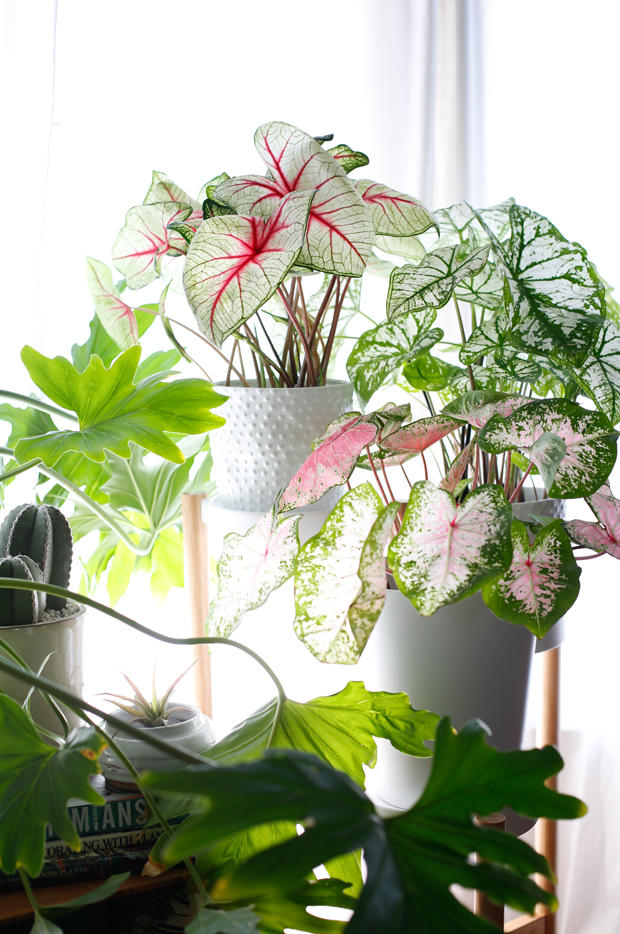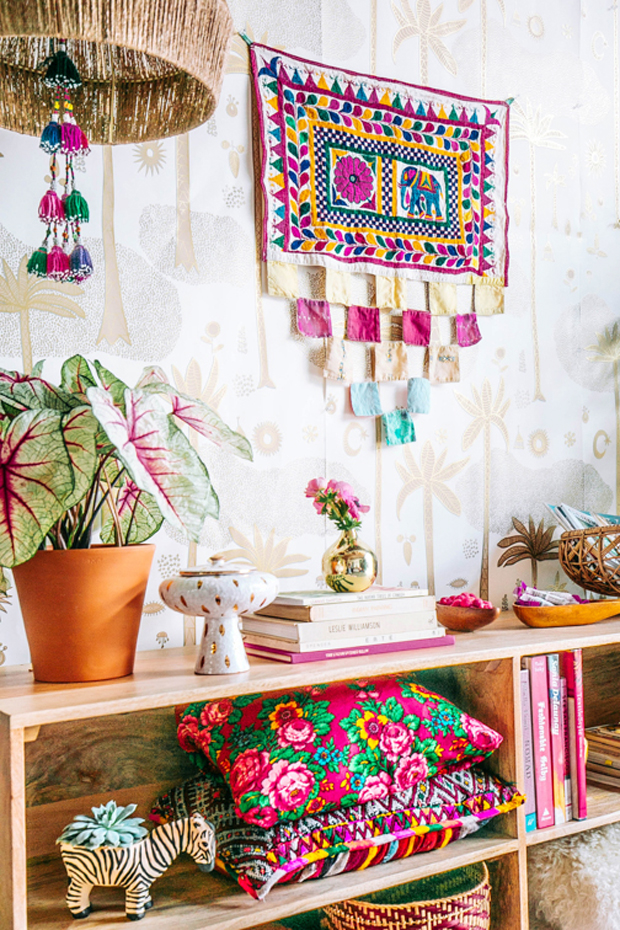
Photo: Danae Horst for The Jungalow
A plant you might recognize from yesterday’s post, Caladiums are a show stopper- with vibrant foliage in a wide range of patterns: from vivid venation; to speckles; all the way to nearly solid leaves in deep shades of red, pink, green, and even purple. Unlike many of the plants we’ve had in the Plant-o-Pedia lately, Caladiums can be very tricky, especially when grown as indoor plants. Never fear though- today, as always, we’ll break down proper care to keep these patternful plants happy in your Jungalow!

Photo: Dabito for The Jungalow
GET THE GREEN: Angel Wings/Elephant Ears/etc (Caladium hortulanem/bi-color 1000+ cultivars)
WATER: Soil must be kept moist, but not soggy, at all times. Water whenever the top of the soil feels dry. Fill pot with water until it runs out the drainage holes, allow to drain a bit, then run more through. Empty saucer or cache pot of any excess water to prevent root rot. Be careful not to splash water on the leaves when watering, which can cause spots.
SUNLIGHT: Bright to medium indirect light. Avoid direct sun, though some cultivars are full sun tolerant.
PLACEMENT: Caladiums thrive in warm climates, so do what you can to simulate that. Ensure the average temp is at least 65°F, and avoid placing them near air conditioners or heat vents. Because they do best with humidity, keep Caladiums in humid spots like the bathroom, or group them with other plants to raise humidity levels. A pebble tray may work as well- fill a saucer large enough to hold the plant(s) with pebbles, and a little bit of water. Keep the water level below the bottom of the pot to prevent root rot.
EXTRA CREDIT: If you’ve been taking proper care of your Caladium and the leaves start to dry up and flop down, don’t worry. Caladiums grow from a tuber, which needs a period of rest each year. Once all the leaves have died off, remove them from the tuber (avoid cutting into the tuber, which can attract pests), then winter the tubers somewhere warm. You can leave the tubers in their pot, somewhere at least 60°F, and water sparingly about once a month. Or, remove them, let them dry out, and store somewhere warm and moderately dry for the winter. You can re-plant in the spring and have Caladiums year after year!
WORD OF CAUTION: According to the ASPCA, Caladiums are toxic to cats and dogs. They are also toxic to humans.

Caladiums have been popular in the South forever. For us they’re an old-timey plant that our great-grandmothers grew. The new cultivars in wonderful colors are an excuse to start planting them again. Thanks for the tips.
I’ve had one of these for about 4 and a half years and I have not known the name of it!!! Mine has actually grown way out of it’s pot and I’m not sure how to replant it – many of the leaves grow straight from the base root, just larger than when I originally got it. But it’s also grown almost like vines 18 inches + long and then have many healthy leaves from those…should I be cutting it back and/or can it be grown from clippings?
Hi Carolyn! Based on what you’re describing, I think yours might be a Syngonium actually! The leaves look similar. If you want to share a photo with me, feel free to tag me on IG or DM me there- I’m @foliacollective. Once I can confirm the species, I can give you better advice. :)
Hello My name is Lupita and I have one of this but it is dying. Can you help me with it??